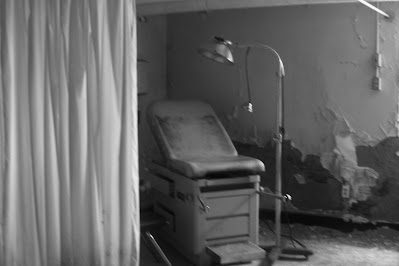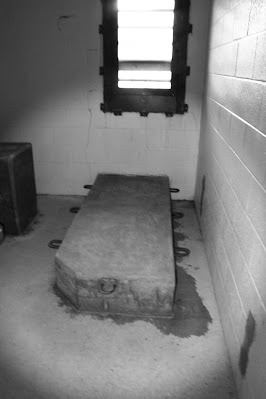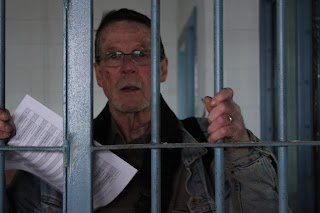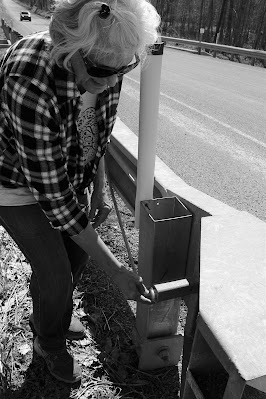As with any good trip, Frank and I left early, before the sun rose. There is always that hope that we would be blessed with a nice sunrise. That didn’t happen on this trip.
We were driving to Cresson, not very far from
the Horseshoe Curve in Altoona.
Frank and I had been out there in February and did a cache near a historical
marker. High on the mountains above Altoona was a sanitarium, the high altitude
and cool air believed to be beneficial to those suffering tuberculosis.
Opened in 1913 it was one of the first of many
sanitariums built to attempt to stop the curse of TB. It operated
until 1964 when the last patient left the facility. After a few re-brandings, the facility has been abandoned since 2013. This would be our destination.
We arrived a little before 9 in the
morning. Barbed wire surrounded the buildings, giving us a rather ominous
feeling as we slipped inside. Hopefully we will be coming back outside later…
We started our exploration with what looked like
the oldest and the largest building. Inside we found basketball courts,
offices, classrooms, a hair salon along with numerous other rooms and in the basement, the boiler
room.
Everywhere we went, paint was peeling off the
walls. While we were looking through the basement, we noticed a cool breeze (?)
drifting past us. Following it, we passed a batch of rooms, their purposes unknown. The light got dimmer as we moved away from the windows. Our flashlights showed us a pair of doors leading into a dark tunnel!
Only about 7-foot square, there were pipes hanging
alongside the walls and from the ceiling, the paint was pealing, and water was dripping. And of course, we went in!
Jacks held the ceiling up in a couple spots. We passed an intersection that led to another building but since it was blocked off, we continued on after shining our lights into it. The tunnel continued on a slight upward angle curving towards the right as it went.
Walking for what seemed like a hundred yards or more, we came to another set of
doors leading into another basement. Going upstairs, we discovered that we were inside a building with bars on the
windows and locks on the doors. Thankfully, the doors were open.
We roamed around in this building for a while, exploring
the different floors and rooms and then moved onto other buildings.
Eventually we discovered some examination rooms
along with an old x-ray machine. Going to another building
we discovered cells. The doors had locks on them and bars were on the windows.
The hospital was in operation until 1964 when the
final TB patient left. The facility was then repurposed to be a hospital for
patients with severe mental disorders. It continued on until the 80’s when it
changed hands and became a medium security prison. The prison closed in 2013.
It was sad looking at the places people had been sentenced to live in. Some of the cells were solitary, having only a concrete bed, with
loops on it for securing the patients or prisoners. A thin canvas mattress lay on
one of them. The furniture in it was made out of concrete! We saw cell doors
with plastic covering the bars with trays for sliding food inside. (Similar to those scenes in Silence of the Lambs!) There were
exercise areas that were only 10’ by 30’. I found these things very depressing!
We visited a couple of the newer buildings, built to
house prisoners. Guard stations still had the controls for the doors and
switches to turn the lights on and off in each of the cells. A few of the cells
held as many as 6 men. (This was an all-male prison) Others were only big enough to hold one.
We stopped at the chapel before we left and sat
for a couple minutes, perhaps resting, maybe saying a prayer that we’d be able
to get back out!
In all, we spent close to 3 hours in the facility.
We probably only visited half of the buildings there. A few of the newer buildings looked pre-fabricated and were falling apart from the weather. The property has more
buildings on it outside the fence but they are being used, we stayed away from them.
There are a lot of interesting things to see in
here. It is surprising how little graffiti and damage there is. We saw lots of
broken windows but most of the damage came from the ravages of time.
We took tons of
pictures, many of which were deleted due to poor lighting. Neither of us got
hurt though both of us complained about our knees. It was worth the pain and I’d
do it again in a heartbeat!
There was just one hitch, if you happen to go
there, tell Frank I’m working on getting his bail money!








































